#section chief nam
Explore tagged Tumblr posts
Text



There is just something about seeing your usually stoic and composed favorite crack a little smile.

#i just realized he only has 3 smiling panels in 169 chapters#manager nam#nam manager kim#lookism#ptj universe#manager nam x reader#manhwa#webtoon#manager kim#manager nam manager kim#section chief nam
62 notes
·
View notes
Text
Found my people 🥹🙏🥰

Sometimes you gotta be the Section Chief Nam content you want to see in the world 🙏
9 notes
·
View notes
Text
Chief Section Nam
Chief Section Nam as a boyfriend
11 notes
·
View notes
Text

In the year 813, Rao Restorationists detonated phantom-bombs on the Wegthor Lunar Capital, wiping out half the population and neutralizing the Corps' presence in Krypton's system.
Within days, they took control of the WLC's central BRAINIAC terminal and declared martial law.
General Dru-Zod had been the principal operator, serving as prime coordinator and strategist.
Zod's senior paladin; Faora Ul-Tek earned notoriety through her frenzied while her elder sister Quex kept to the shadows.
Proctor Jax-Ur was a rejected El-Hopeful and served as Zod’s commanding sneer for the lower ranks. He lost an eye to Faora's blind savagery.
Field Scribes Ursa Ma-Nel and Tor-An were the only surviving members of their section; the roughly fifty people responsible for installing, arming, and detonating the phantom-bomb array.
Car Vex-Win, the Lesser Commander, was remarkably cold and calculating. She performed her role not with Faora's heated passion or Zod’s solemn zealotry, but with a detached, almost apathetic air of acceptance.
Nam-Ek, disbarred from the House of El due to his illegal and blasphemous experimentation, found solace with the Restorationist cause.
Of the fifty-six Gruntsmen responsible for holding off Wegthor’s authority and destroying critical infrastructure, only two survived; Nadira Ca-Nil, and Gan Gor-Van.
Having been radicalized in his youth, Constable Dev-Em, chief constable of Atoni City, was a ready prospect for the Restorationists. His access to deepband communication systems and his position of high authority was critical for the coup's success, especially as he was able to covertly aid operations from a hidden base on Krypton itself.
The strangest and a most terrifying member of the Restorationists was Non-Od - the Brute. This silent, unthinking thing in Kryptonian flesh would likely have shocked Zod’s great-grandfather into outrage if not outright violence.
Not born of a womb or cloned from noble seed, but instead stitched together in a chamber beneath the city of Kandor, this illegal affront to Rao was a horror-show come to life - an army of one.
Its cells absorbed and saturated young-sun energy nearly five times as well as its compatriots. More loyal than a Fuun, it murdered and destroyed without discrimination or hesitance.
As cruel as Car-Vex or Faora seemed to be, Non-Od was incapable of even contemplating the atrocities it committed.
#superman#krypton#worldbuilding#rao restorationists#sword of rao#dru-zod#faora ul-tek#quex ul-tek#jax-ur#ursa ma-nel#tor-an#car vex-win#dev-em#nam-ek#nadira ca-nill#gan gor-van#non-od#dc#earth 888#my art
33 notes
·
View notes
Text
Alright, I finally got my hands on this full ... presscon? cast reaction? Whatever.
I already shared some screenshots from this before (by some people on Twitter) and after finally watching the full version, I fell like I need to share the rest of the season 2 world building and character lores mentioned and discussed to you guys in here (and also major spoilers for season 3)
P.S. I could be wrong on some of the points here (either misinterpreting or not paying enough attention), so please correct me if I do in the reply section
youtube
Season 2
I'm still confused af on this line : "he killed his original body as well as his personality, eventually turning into the twisted monster that he is now". Like so, does it refer to Sang-won killing his original body in season 2 or is it about monster Sang-won killing the real Sang-won?
I still don't get this line too, so interpret it however you want : "The child covered in black?" "This is where what's remaining of Sang-won disappears, uncovering the child."
Chan-young was a baseball player. Ye-seul was one of the cheerleaders
Oh, apparently monsterization does still happened inside the stadium. That's why there's a regular daily checking. Anyone showing symptoms will be out in the isolation place (yeah that place where they put the sick mom in). Some lived, some died inside the isolation => might be why Chief Ji keeping her monster son secluded somewhere deep inside the stadium
Hyun-su cut Yi-kyung's daughter hair the same style as him, hence how they're being similar appearance wise
The live action crew is adapting Shotgun Boy into Netflix Sweet Home
Yi-kyung blames herself for how her child turned out to be with her monster-turning power
Yi-kyung's inability to give affection or even touched her child stems from the fact that monsters are created from human desires, so she didn't want her child to have desire (awfully familiar with a particular old man *side glance*)
Yep, you guessed it. These three (Hyun-su, Eun-yu, and Chan-young) are dense as fuck about their own feelings to each other (minus Hyun-su to Chan-young and vice versa ofc)
Yi-kyung's daughter views Hyun-su as her own family even more than her biological mother. Because they're similar and he's the only person she could hold hands with without her power reacting
Hyun-su uses red ribbons to mark the safe area for Eun-yu because color red stands out among the greenery of Seoul post time skip
The monster cocoons are shaped like a heart because monsterization manifests from human desires
The "real Jung Wui-myeong" is one of the scientists. Sang-won (or monster Sang-won depending how you interpret the earlier points) took his identity and used it as his own, probably to separate himself from his old human self
Lmao, not them calling Sang-won's family as family of evil and there's no good apple in it. That's so fucking foul
Sang-wook is still there somewhere (I already shared this one before)
Sang-won's original abilities include the Medusa touch he did to Hyun-su in episode 3
Oh wait, Yi-kyung survived?! I thought she died after her fight with Hyun-su (uh oh *nervous glance to every instance of me mentioning "her death" in replies*)
Monster Hyun-su act according to what Hyun-su thinks and desires (I had shared this one before)
Monster Hyun-su is more proactive and extrovert (is the extrovert part really necessary?")
Season 3 rough summary
Family drama : Nam Sang-won starts a bunch of trouble (this bitch) in order to create a world he dreams of. There are family reunions and conflicts between spouses. He also meets his child (uh oh). They fight for her custody. This custody case didn't need a court (fuck, oh come on 😂). Yi-kyung wouldn't just talk it out. She'd fight until one is dead
Sibling drama : Eun-yu will meet Eun-hyeok again, but I'm not sure it'll make her happy
Second male lead struggle : Chan-yeong faces even more hardships as the story progresses. But even then, he gives up a lot just to protect Eun-yu. He starts to understand the monsters more. There's a lot on his mind as the story goes on.
More monster Hyun-su : Hyun-su lets go of himself and lets out the monster. But the monster doesn't just do its thing. He reads Hyun-su's mind and acts as he wants.
Another Hyun-su and Yi-kyung interaction : And later on, he interacts with Yi-kyung as well. The emotion it brings also felt huge. In the narration, he tells Eun-yu how much pain Yi-kyung is in and that he has to stop it all himself. So I'm sure Hyun-su sparked a change in Yi-kyung's heart. That'll continue in Season 3.
#sweet home 2#sweet home season 2#sweet home netflix#sweet home#anyway the eng sub is available so no need to worry if you can't understand korean#i made this post and look back to my older posts and don't know what to do with it now (especially the musing and wondering ones)#cha hyun su#jung ui myeong#seo yi kyung#lee eun yu#park chan young#nam sang won#also gonna pin this just in case people see my older posts about sweet home 2
49 notes
·
View notes
Text
Chief Section Nam as a boyfriend
This man has been in the army. So he's very protective of you since he had multiple enemies who might come after him.
He's a quiet one, he's also shy and very respectful of your wishes.
He wishes he could take another job. But unfortunately for people like him. most jobs he can only take is being a mercenary if he wants to give you a good life.
He doesn't tell you what he does at work as he doesn't want you to be disappointed on him.
- He likes holding your hands.
- Kissing the back of your hand.
- He likes whisper how much he loves and adores you.
- This man can and would cook for you. He learned it from a cooking book. But his cooking isn't always perfect please understand.
- He likes cuddling with you.
He most definitely follows you on his free time. He doesn't really want to bother you so he just follows around.
Would definitely be your personal bodyguard subconsciously.
He would follow you behind. Carry your bags. You wonder if you gained a boyfriend or a bodyguard.
- He's very shy. It's because the world he lived in. Love is a weakness that could get to him.
- This man has never thought of falling in love until he met you.
- At first, when you both became together he can't even be near you. He can't even hold your hand let alone speak with you. Because he doesn't know how to express his feelings.
- You have to take the lead.
- You guys either went to colleagues to lovers or friends to lovers.
- It took him months to hold your hand. And even speak to you properly.
PLEASE LOVE AND PROTECT THIS MAN. HE MAY BE STRONG BUT THIS MAN IS EMOTIONALLY SOFT.
5 notes
·
View notes
Text
The Good Ship Crushway, Chapter 56
So, it's been a rough several months. It's finally time for some self-insert.
DS9: Star view.
Bashir: Chief Medical Officer's Log: Stardate 56823.2. The time has come to perform the surgeries on Sissun, Chuti, and Keriss, the foremost authorities on Lyantirum travel. It is imperative that these surgeries go well. Without their help, Starfleet might have to ban travel to the Alma Nebula altogether.
Bashir walking into a Cargo Bay, is greeted by a tall, thin, pasty alien with impossibly long red hair.
Bashir: Good morning, Joy. Joy (bows to Bashir) Kālai vaṇakkam. Bashir: ...What? Joy: I was greeting you in your ancestral tongue. Bashir: Tamil? (They nod excitedly.) Joy, I don't speak Tamil. No has for 100,000 years, at least. Joy: I'm sorry. I didn't mean to offend you. Bashir: (laughing) You didn't offend me. I just don't speak that language. Joy: What languages do you speak? Bashir: I speak English mostly, but I know enough Klingon to get myself in trouble with Klingons. (slight chuckle) I swear, I'll never drink bloodwine again. Joy: (alarmed) Do you want me to accompany you the next time you wish to imbibe? I can help you learn to be more diplomatic. Bashir: (smiling sweetly) Please don't worry about me. That was a joke. Joy: (mostly understanding the joke) All right, I won't worry about you. Bashir: Go enjoy yourself--have you met my husband? Joy: I have met Garak. He is a masterful tailor. Bashir: That he is. He speaks several languages. Joy: Does he speak Tamil?
Scene cut: Data, Bev, and Seven are in a Cargo Bay working intensely.
Bev: Data, would you hand me that spanner? Data: (Placing it in her hand) Spanner, Doctor. (the patient begins to thrash) Seven: The patient is awake, Doctor. Bev: Crusher to Joy. Cargo Bay 1, immediately! Joy: (running) On my way. (They run through the entrance.) Where? Bev: 10 meters, straight ahead. Joy: (runs and stops just short of the table. They touch the drone's skin. A melody erupts from them, spilling out from their soul almost uncontrollably. The drone slowly soothes themself as they breathe deeply, eventually giving back into the anesthesia. Joy does not look at the doctor.) Is there anything else you require? Bev: No, nothing else, Joy. Joy: (gaze falling over the drone) Ish-veh dungi nam-tor abru' ak, Chuti. (They turn around and walk out unsteadily.)
DeAnna exits another session and stretches. She is clearly exhausted. Joy's thoughts come into her mind.
Joy (VO): Counselor, are you busy? DeAnna (VO): No, not really. Joy (VO): Great! DeAnna (VO): Where are you? Joy (VO): I think I'm near you? I've gotten a bit lost. DeAnna (VO): Hold on, I'll find you. (out loud) Computer, locate Joy. Computer: Joy is in corridor F, section 12. DeAnna (VO): I'm very close. Just a moment. (DeAnna walks down a hall, takes a turn, and there stands Joy, feeling their way along the wall. Out loud) There you are. Joy: Thank you for finding me, DeAnna. DeAnna: (takes Joy's hand and puts it around her forearm, guiding them) What were you going to do? Joy: I was going to my quarters to do some research. DeAnna: On what? Joy: Seeing eye dogs. DeAnna: Those stopped being used a long time ago. Joy: Maybe with humans, but not with my people. DeAnna: Okay. I do know of one person who trains service animals on Earth. Joy: (excited) Earth!? What language do they speak? DeAnna: She speaks several, but English is probably the safest bet. Joy: Does she speak Tamil?! DeAnna: You know what? I don't know. She might. Joy: I think that is where I want to go. DeAnna: Earth? Joy: Yes. DeAnna: Well, here you are: your quarters. Joy: Thank you, DeAnna. I shall see you later. DeAnna: Goodbye, Joy.
Data and Bev exit Cargo Bay 1. Bev is mission-minded.
Bev: Computer, show me the way to Joy's quarters. (She follows a series of blinking balls, and then she rings Joy's doorbell.) Joy: Who is it? Bev: It's Beverly, Joy. Joy: (opening the door) Come in, Doctor. Bev: (enters their quarters, looking around, puzzled) I didn't expect you to put out pictures. Joy: Pictures? Bev: These little snapshots on the wall; they're well done. Joy: Oh, those aren't pictures. They're me. Bev: What do you mean? Joy: I am among many dimensions--at least 20. When one of me dies, that spirit comes to me, wherever I am. Bev: Can you see them? Joy: (smiling) In my own way, yes. Bev: Well, I came to give you the treatment. Joy: Okay. I'm ready. Bev: Let's start. (Bev grabs Joy's hands. They lean away from each other, as if stretching their backs. They both breathe deeply and lift one foot in the air. From Joy's chest comes a beautiful light. It grows larger and larger, and then it encircles the two. They hold the pose until Joy nods. Another melody comes from the light as it slowly dissipates.) I know this is a necessary, medical procedure for you, but I have to tell you--it looks beautiful from my perspective. Joy: Thank you. Bev: (sitting down) May I ask you a couple questions? Joy: Of course. Bev: What are other Kaanor like? Joy: They are not like me. Bev: In what way? Joy: Not all of us are blind. My mother had darker hair and darker skin than I do. Bev: Did your mother sing? Joy: No, but my father did. Bev: What was he like? Joy: He had a lovely baritone voice. His tone was strong and full. Bev: Did his voice soothe everyone around, too? Joy: (sadly) It soothed me. I don't know about everyone else. Can we talk about something else? Bev: Yes--I'm sorry. Are you interested in corneal transplants? Your blindness must cause such discomfort. Joy: No, I am comfortable with my existence as it currently functions. Bev: All right, then. (hesitating, deciding to go ahead) Was what I did today okay with you? Joy: Do you mean calling me into the surgery? Bev: Yes. Joy: It has been a long time since I have healed instead of hurt. I liked it. Bev: Would you be interested in becoming a nurse? Joy: While that sounds wonderful, I do have a lifetime ahead of me to consider more options. I want to visit Earth first. Bev: What's on Earth? Joy: DeAnna told me of someone there who trains seeing eye dogs, and I can't imagine a better companion. Bev: Lady Firbolg? I know her well. Joy: That's wonderful! Would you introduce me? Bev: I'm not sure when I will return to Earth--it should be soon. Let me check on that. Joy: Beverly? (Bev looks back, expectantly.) Thank you for learning how to do the Amnah Alhaya. I was worried no one would care enough to learn it. Bev: Now that Starfleet knows of the Kaanor's existence, the Amnah Alhaya will be required learning at Starfleet Medical. Thank you for teaching me. (Joy bows as Bev leaves.)
KJ, Picard, and Sisko in Sisko's ready room, all staring at Patrick.
Picard: He seemed like he was in a dark place. Please check on him. I don't like him at all, but I want him to be okay. Patrick: It's strange that Ian called you and not me, but I'll talk to Q. I'm not sure what this means for him. I hope you don't mind, Captain Sisko, but I won't be summoning him here--he's still a little afraid of you. Sisko: (chuckling) Good. Now, as much as I have loved having you here, Kathryn, I do believe you have orders to return to Earth. Starfleet Command sent them this morning. (He gestures to a padd, and then he gives KJ a cup. KJ looks at him curiously.) Raktajino--coffee for only the greatest of warriors. (KJ smiles and takes a sip. She nods her head, smiling and giving a grunt of satisfaction.) KJ: My orders are (reading) to return to Utopia Planitia with the Aiftadaa. That's strange--we never saw all that the Alma Nebula had to offer. Picard: That's where I come in. Starfleet had me take command of the Enterprise again, and bring it out here. Lt. LaForge has been studying, and he has become one of the most knowledgeable minds on Lyantirum. He hopes to study with the mighty three and find a way to use the Lyantirum weapon as a tracking device to bring back even more drones. KJ: Geordi will be good at that. Sisko: Chuti's surgery was successful. Today is Keriss, and tomorrow is Sissun. Once they are recovered, Geordi can begin brainstorming with them. KJ: Aren't they going to need to go through the therapy program? Sisko: It will be a simultaneous experience. Picard: That's where you come in, Patrick. You are a skilled therapist who works well in the midst of other, larger things happening. You'll be working with Geordi and the three to make sure everything is and stays okay. Patrick: What about Dukat? Who's going to help him? KJ: My orders say he is coming back to Utopia Planitia with us to undergo some intensive therapy. He'll be with Dorai Numi. Patrick: She's the only half Cardassian, half Bajoran in the program. I think she'll provide a unique perspective. Sisko: Last thing, Kathryn. You'll be taking Joy with you. KJ: The Kaanor? (Sisko nods, smiling.) I've been wanting to meet her. Patrick: Joy uses they/them. KJ: Sorry, them. Patrick: They are interesting! DeAnna told me that they are going to earth to get a seeing-eye dog from Lady Firbolg. KJ: You mean my person of honor?! I'd love to introduce them. Patrick: I'm sure they would love that. Sisko: Kathryn, you need to know that Starfleet is subtlety encouraging you to recruit Joy for Starfleet. With their gift for languages and succor, they will be useful in the coming months. KJ: Beverly told me they might want to be a medic. Sisko: (nodding) Splendid. Well, now that all orders have been handed out and discussed, let's get started on this day.
(Patrick and Daneel bow in a solemn goodbye. Data takes Daneel's hand, and they walk to another airlock. Joy is feeling their way along the wall.)
Data: May I help you, Joy? Joy: Who is it? Data: My name is Data. Joy: DATA?!? Data: Yes. Joy: I apologize for my outburst. I have heard so much about you, and I am so happy to meet you! Daneel: My name is Daneel, and Data is my partner. Joy: Peldor Joi, Daneel! Will we be having any celebrations onboard the Aiftadaa? Daneel: Thank you for your greeting. The Gratitude festival isn't for another few days, but I am sure there will be a small dinner for it when we arrive at Utopia Planitia. Joy: If I am permitted to attend, I would love to. Daneel: (gingerly) I don't celebrate during the Gratitude festival. I appreciate your trying to celebrate with and support my culture, but the fact is I don't believe in the Prophets. While the festivities are quite enjoyable, I don't celebrate during the Gratitude festival, at least not in the way everyone else does. For me, it is a time of meditation and fasting. Joy: I apologize for my assumption. Daneel: I forgive you. It is rare to find a Bajoran who does not celebrate. Joy: Is there anything I can do to aid in your meditative practices? Daneel: There may be something you can do. I will let you know once I've done more research. (beat) Let us help you to your quarters. Joy: (singing) Thank you, Daneel and Data.
As Joy gets ready for bed, we see them fondly touch the pictures in their room one by one. Lights come out of each of them and swirl around Joy, giving them new life and allowing them to breathe a new melody. They sigh as the lights return to their pictures. Joy curls up on the bed, saying to no one in particular:
Joy: Thank you.
2 notes
·
View notes
Photo










Meet the “captain” of my ship! LOL! I love his smile! so cute!
#suspicious partner#love in trouble#ji chang wook#nam ji hyun#ji wook#bong hee#jang hyuk jin#section chief bang#funny#i love this guy#korean
172 notes
·
View notes
Text
Nam chapter 170








#manager kim#manager nam#nam manager kim#ptj universe#manager nam x reader#lookism#webtoon#manhwa#manager nam manager kim#section chief nam#manager kim spoilers
35 notes
·
View notes
Photo

Yumi’s Cells Episode 1 - The Cell’s dynamic comes into play and we learn about Yumi’s office crush and frenemy.
Who is Yumi?
Yumi is a regular office worker who lives alone for the past 4 years and she doesnt have a boyfriend. Her last date that didnt end well was 3 years ago. Since she’s not dating she decided to focus on work alone, it seems to work and she got promoted to assistant manager. Yumi also has a crush on her coworker who is 5 years younger, Ugi.
Yumi who wants to spend time with her crush tries to finish up all her workload, Chief Nam wanted to head out the office with her but she ignored him. She’s excited to be with Ugi.
We thought that this is a date, the irritating Ruby is introduced. This ruined the whole dynamic and it ended up dropping Yumi off.
At work we can see curiosity and jealousy surrounding Yumi. She wants to know what is going on with Rubi and Ugi. She was also invited to go to the flower festival by Ugi which made Rubi turn sour. Rubi tried to be nice and invited Chief Nam though Chief Nam turned it down.
After one of the cells helping Yumi, she broke out defending herself and eventually agreeing to go with Ugi for the flower festival.
The Cells
Cells come into play. We have Rationality and Sensitivity dealing with Ugi while Hunger makes a big entrance as one of Yumi’s prime cells.
While she bumped into Ugi, Detective Cell was introduced dissecting Ugi’s actions.
Since there are too many cells there has to be a structure. The Cells are perfectly introduced and they have a section called the “Prime Cells”. Each person has a main aspect from their personality that perfectly portrays them. Yumi’s main cell in Love Cell. Due to her past romances love cell was never found after a incident that led her to tears and Love Cell being in a coma.
While Ugi, Rubi and Yumi were having a discussion about the flower festival. The Cells were trying to find ways for Yumi to act on it. They believe especially Detective Cell that Rubi is doing this so that Yumi will pair with Chief Nam instead of Ugi. The plans were ruined under circumstances then Yumi had enough.
The cells continue to debate on how they could move forward with Yumi and Ugi, a surprising turn as Love Cell makes an appearance. She suddenly reappears all battered and is ready to lead the cells. Love Cell is the leader of the pack!
Thoughts
The pilot episode is really light, fun and enjoyable. Its a great weekend drama if you just want to relax. The visual effects especially the 3D work of the cells are amazing. Kim Go Eun as Yumi comes off as relatable and i love the cells’ dynamics especially how they effect the daily life and romance of Yumi herself.
3 notes
·
View notes
Text
Different Characters;
Minji
Dabin
Taehoon
Chief Section Nam
#manager kim webtoon#manager kim#manager kim dabin#manager kim park dabin#manager kim minji kim#manager kim minji#minji kim#park dabin#manager kim taehoon#manager kim seong taehoon
3 notes
·
View notes
Text
Yumi's Cells Episode 1
Yumi’s Cells Episode 1
Kim Yu Mi (Kim Go Eun) wakes in bed and imagines Chae Ugi in bed with her. He murmurs seductively they have time before work. They melt into a kiss. Yu Mi wakes from the lovely dream alone in bed. Yu Mi is a hardworking employee at Daehan Noodles. Her boss, Section Chief Nam, relies on her superior efforts and late nights to deliver him the products he needs. Yu Mi has a crush on a co-worker in…

View On WordPress
0 notes
Text
دانلود سریال کره ای سقوط برروی تو Crash Landing on You بازیرنویس فارسی

♦ دانلود سریال کره ای سقوط برروی تو Crash Landing on You ♦ ♦ پخش آنلاین , دانلود موسیقی متن و زیرنویس فارسی تا قسمت آخر ♦

♦ دانلود سریال کره ای Crash Landing on You ♦
♦ مشخصات سریال کره ای سقوط برروی تو ♦ عنوان: سقوط برروی تو / Crash Landing on You عنوان کره ای:사랑의 불시착 ژانر: کمدی، عاشقانه، درام کارگردان:Lee Jung Hyo نویسنده:Park Ji Eun شبکه:tvN, Netflix تعداد قسمت ها:16 تاریخ شروع پخش:14 دسامبر 2019 جایگزین: سریال کره ای Melting Me Softly بعد از این:سریال کره ای Hi Bye Mama کیفیت: ۴۸۰-۵۴۰-۷۲۰ ♦ خلاصه داستان ♦ یون سه ری یک وارث ثروتمند در کره جنوبی است که در هنگام پاراگلایدر سواری به یک طوفان شدید برخورد میکنه و مجبور میشه که در کره شمالی فرود اضطراری انجام بده. در آنجا به طور تصادفی با لی جونگ هیوک که افسر ارتش کره شمالی است ملاقات میکنه و لی جونگ هیوک تصمیم میگیره تا برای م��افظت از یون سه ری او را مخفی کنه. رفته رفته لی جونگ هیوک عاشق یون سه ری میشود و… ♦ بازیگران سریال کره ای Crash Landing on You ♦
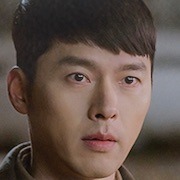
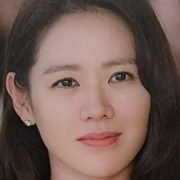


Hyun-Bin Son Ye-Jin Seo Ji-Hye Kim Jung-Hyun Ri Jeong-Hyeok Yoon Se-Ri Seo Dan Gu Seung-Jung Captain Ri's Company Five
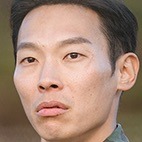
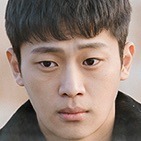
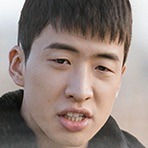

Yang Kyung-Won Lee Sin-Young Yoo Su-Bin Tang Joon-Sang Pyo Chi-Su Park Kwang-Beom Kim Ju-Meok Geum Eun-Dong Captain Ri's Family
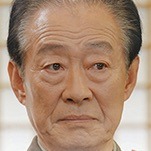


Jeon Kuk-Hwan Jung Ae-Ri Ha Seok-Jin Ri Chung-Ryeol Kim Yun-Hui Ri Mu-Hyeok Se-Ri's Family


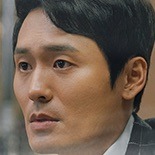

Nam Kyung-Eup Pang Eun-Jin Choi Dae-Hoon Hwang Woo Seul Hye Yoon Jeung-Pyeong Han Jeong-Yeon Yoon Se-Jun Do Hye-Ji
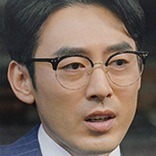

Park Hyoung-Soo Yoon Ji-Min Yoon Se-Hyeong Ko Sang-A Seo-Dan's Family
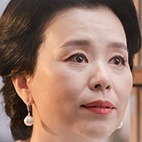

Jang Hye-Jin Park Myoung-Hoon Ko Myeong-Eun Ko Myeong-Seok Se-Ri's Group
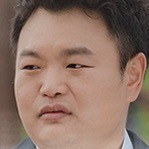
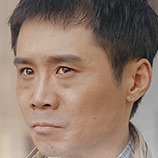

Ko Kyu-Pil Lim Chul-Soo Kwon Dong-Ho Hong Chang-Sik Park Su-Chan purchasing manager Seung-Jung's Group
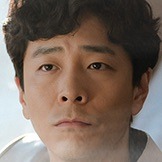
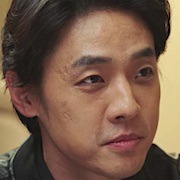
Hong Woo-Jin Yoon Sang-Hoon Cheon Su-Bok Manger Oh Captain Ri's NK village


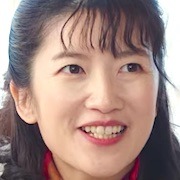

Kim Sun-Young Kim Jung-Nan Jang So-Yeon Cha Chung-Hwa Na Wol-Suk Ma Young-Ae Hyeon Myeong-Sun Yang Ok-Geum



Woo Jung-Won Kim A-Ra Lim Sung-Mi neighborhood woman neighborhood woman market vendor




Park Seung-Joon Gu Jun-Woo Oh Han-Kyul Kang Young-Eun Ho-Yeong (Wol-Suk's son) Nam-Sik (Young-Ae's son) Jeong U-Pil (Myeong-Sun's son) Eun-Byeol (Ok-Geum's daughter)
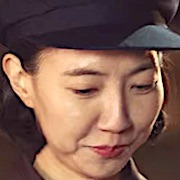


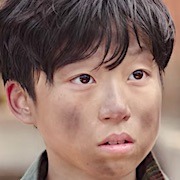

Joo Ye-Rin Jin Yong-Wook Hwang In-Jun Cha Sung-Je Ahn Se-Bin neighborhood woman market butcher market pawn broker beggar boy (ep.3.15) beggar boy's sister (ep.3,15)
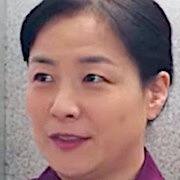


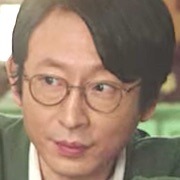

Lee Se-Rang Park Ok-Chool Shin Mi-Young Shin Dong-Ryuk Kim Sook elevator operator (ep.5) elevator operator (ep.7) elevator operator (ep.9) English tutor (ep.10) fortune teller(ep.11,16) NK Military
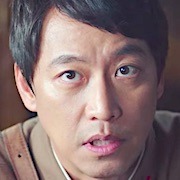
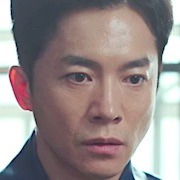
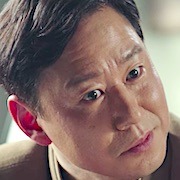
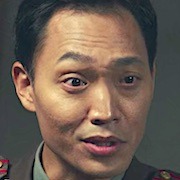

Oh Man-Seok Kim Young-Min Kim Young-Pil Jeon Jin-Woo Kang Hyoung-Suk Cho Cheol-Gang Jung Man-Bok Senior Colonel Bureau Director Choi Cho Cheol-Gang's subordinate

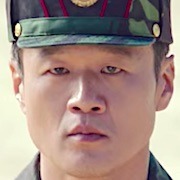
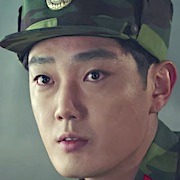


Kwak Ja-Hyoung Baek Sung-Chul Park Kwang-Il Choi Moo-In Jang Nam-Boo Chief Coast Guard (ep.3-4) Hwang Yeong-Beom armory staff (ep.6) Hwang Tae-Yong (ep.6,11) Military Director (ep.8-9,12,16)

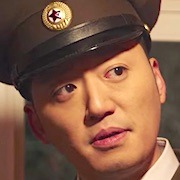
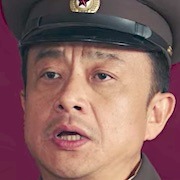

Yu Seung-Il Oh Jae-Se Lee Jung-Yeol Nam Jung-Woo Detention Center Head (ep.9) commander at guard post (ep.10) military trial judge (ep.10) Military Director's subordinate (ep.12) Childhood Days

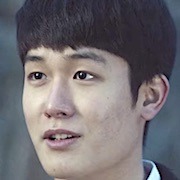

Kim Tae-Yeon Kim Seung-Chan Park Seo-Yeon Yoon Se-Ri (young) (ep.4) Ri Jeong-Hyeok (young) Seo Dan (young) (ep.9) Others
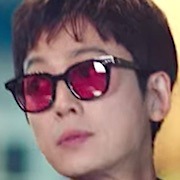
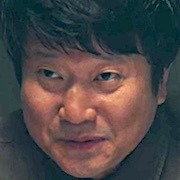



Jung Kyoung-Ho Lee Dong-Yong Lim Chae-Seon Park Yong Baek Seung-Chul Cha Sang-U (ep.1,5,7) grave robber (ep.1) grave robber (ep.1) Police Officer Lee Gun-Woo (ep.1) fishing boat captain (ep.3-4)
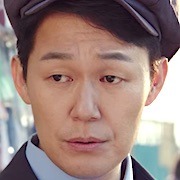
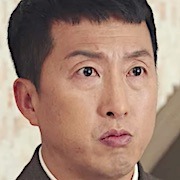

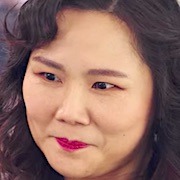

Park Sung-Woong Lee Young-Jin Kim Yoon-Joo Sun Jung-Hwa Kang Chan-Yang taxi driver (ep.4) photo studio man (ep.6) Jin-Sook (ep.6,11) hairdresser (ep.6) Pyongyang Hotel clerk (ep.6)
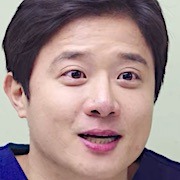

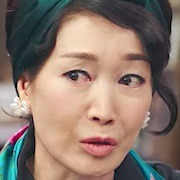
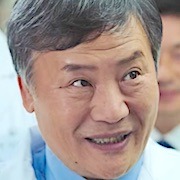

Ko Han-Min Lee Ho-Jung Na Young-Hee Choi Hong-Il Kim Na-In doctor (ep.7-8) patient (ep.7-8) clothing shop owner (ep.7) Jang So-Cheol (ep.7-8) kidnapper (ep.8-9)
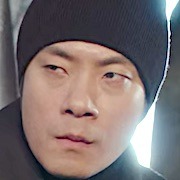




Moon Ba-Rom Koo Ji-Hye Lee Sang-Hwa Park Chan-Woo Kim Bum-Suk kidnapper (ep.8-9) Seo Dan's high school classmate (ep.9) Park Su-Chan's boss (ep.10,12) North Korean doctor (ep.10) NK track team coach (ep.10,13-14)





Kim Soo-Hyun Bae Bo-Ram Ahn Soo-Bin Jung Young-Hoon Kyung Ki-Hyun Dong-Gu (ep.10,15) Seo Dan's friend 2 (ep.11) Seo Dan's friend 3 (ep.11) Seri's Choice security (ep.11-12) sandwich employee (ep.12)



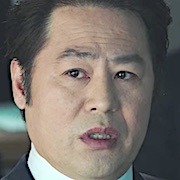
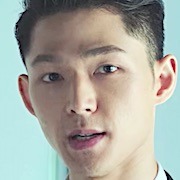
Kang Ro-Chae Choi Ji-Woo Yoo Jung-Ho Park Ki-Ryoong Han Dong-Ho Saleswoman Yoon Mi-Ji (ep.12) herself (ep.13,15) NIS Section Chief Kim (ep.14-16) NIS executive (ep.14-16) NIS agent (ep.15-16)

Choi Seung-Yoon ♦ لیست موسیقی متن های سریال Crash Landing on You ♦ Track list: Part 1 01. 10cm - But it’s Destiny (우연인 듯 운명) 02. 10cm - But it’s Destiny (우연인 듯 운명) (Inst.) Part 2 01. Yoon Mi Rae (윤미래) - Flower 02. Yoon Mi Rae (윤미래) - Flower (Inst.) Part 3 01. Davichi (다비치) - Sunset (노을) 02. Davichi (다비치) - Sunset (노을) (Inst.) Part 4 01. Yerin Baek (백예린) - Here I Am Again (다시 난, 여기) 02. Yerin Baek (백예린) - Here I Am Again (다시 난, 여기) (Inst.) Part 5 01. Kim Jae Hwan (김재환) - Someday (어떤 날엔) 02. Kim Jae Hwan (김재환) - Someday (어떤 날엔) (Inst.) Part 6 01. Song Ga In (송가인) - Photo of My Mind (내 마음의 사진) 02. Song Ga In (송가인) - Photo of My Mind (내 마음의 사진) (Inst.) Part 7 01. April 2nd (에이프릴 세컨드) - The Hill of Yearning (그리움의 언덕) 02. Nam Hye Seung (남혜승), Park Sang Hee (박상희) - The Season of Us (너와 나의 그 계절) Part 8 01. Sejeong (세정) - All of My Days (나의 모든 날) 02. Sejeong (세정) - All of My Days (나의 모든 날) (Inst.) Part 9 01. So Soo Bin (소수빈), SOHEE (소희) - Like You (좋다) 02. So Soo Bin (소수빈), SOHEE (소희) - Like You (좋다) (Inst.) Part 10 01. Crush - Let Us Go (둘만의 세상으로 가) 02. Crush - Let Us Go (둘만의 세상으로 가) (Inst.) Part 11 01. IU (아이유) - I Give You My Heart (마음을 드려요) 02. IU (아이유) - I Give You My Heart (마음을 드려요) (Inst.) Various Artists 01. 10cm - But it’s Destiny (우연인 듯 운명) 02. Yoon Mi Rae (윤미래) - Flower 03. Davichi (다비치) - Sunset (노을) 04. Yerin Baek (백예린) - Here I Am Again (다시 난, 여기) 05. Kim Jae Hwan (김재환) - Someday (어떤 날엔) 06. Kim Kyung Hee (김경희) April 2nd (에이프릴세컨드) - Sigriswil (시그리스빌) (Crash Landing on You Title Full Ver.) 07. Nam Hye Seung (남혜승), Park Sang Hee (박상희) - Spring In My Hometown (고향의 봄) 08. Nam Hye Seung (남혜승), Park Sang Hee (박상희) - The Wind Of The Day (그날의 바람) 09. Nam Hye Seung (남혜승), Park Sang Hee (박상희) Feat. Jeong Hyuk (정혁) - The Song For My Brother (형을 위한 노래) 10. Nam Hye Seung (남혜승), Park Sang Hee (박상희) - My Companion (나의 동무여) 11. Nam Hye Seung (남혜승), Park Sang Hee (박상희) - Like A Wild Flower (들꽃처럼) 12. Nam Hye Seung (남혜승), Park Sang Hee (박상희) - Time Of JungHyuk For Seri (세리를 향한 정혁의 시간) 13. Nam Hye Seung (남혜승), Go Eun Jeong (고은정) - Moments We Walked Together (함께 걷던 순간) 14. Nam Hye Seung (남혜승), Park Sang Hee (박상희) - Seri's Choice (세리스 쵸이스) 15. Song Ga In (송가인) - Photo of My Mind (내 마음의 사진) 16. April 2nd (에이프릴 세컨드) - The Hill of Yearning (그리움의 언덕) 17. Sejeong (세정) - All of My Days (나의 모든 날) 18. So Soo Bin (소수빈), SOHEE (소희) - Like You (좋다) 19. Crush - Let Us Go (둘만의 세상으로 가) 20. IU (아이유) - I Give You My Heart (마음을 드려요) 21. Nam Hye Seung (남혜승), Park Sang Hee (박상희) - YoungAe And Villagers (영애동지와 마을 사람들) 22. Nam Hye Seung (남혜승), Park Sang Hee (박상희) - Chi Soo And Seri (치수와 세리) 23. Nam Hye Seung (남혜승), Park Sang Hee (박상희) - The Song For My Brother (형을 위한 노래) (Orchestra Ver.) 24. Nam Hye Seung (남혜승), Park Sang Hee (박상희) - Seo Dan (단이) 25. Nam Hye Seung (남혜승), Park Sang Hee (박상희) - Same Sky, Different World (같은 하늘, 다른 세상) 26. Nam Hye Seung (남혜승), Park Sang Hee (박상희) - Picnic (소풍) 27. Nam Hye Seung (남혜승), Park Sang Hee (박상희) - The Season of Us (너와 나의 그 계절) 28. Nam Hye Seung (남혜승), Park Sang Hee (박상희) - When That Day Comes (그날이 오면) 29. Kim Kyung Hee (김경희) April 2nd (에이프릴세컨드) - Sigriswil (Opening Title Ver.) ♦ ریتیگ سریال Crash Landing on You ♦ Read the full article
10 notes
·
View notes
Text
Asked to start preparing for the Seonghwa while Moon was still alive...
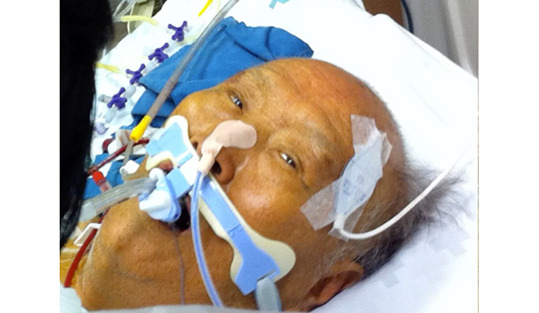
Recently Akiko Kang spoke at the Los Angeles Unification Sanctuary service. She explained about the three violent crimes of Kim Hyo-nam and the Han Mother, Hak Ja Han, seven years ago.
1. True Father was moved to St Mary’s Hospital on August 13th. The next day the staff at CheongPyeong were asked to start preparing for the Seonghwa while he was still alive.
2. The mouthpiece. Father was conscious and willing and tried to talk. He was not sedated.
3. The Han Mother suggested to withdraw Father’s life support, but was opposed by Hyung Jin Nim and Kook Jin Nim, as well as Bo Hi Pak, so this was not done.
He died on September 3, 2012.
VIDEO:
youtube
Here are two reports from a couple of years ago:
“I got this information directly from Hyung-jin nim. IT IS NOT A RUMOR. Hyung-Jin nim was in the hospital room with Mother, Father, Mrs. Kim, and the Korean leaders. As I said earlier, Mrs. Kim was encouraging Mother to pull the plug. The doctor was preparing the papers for Mother to sign giving him permission. All of the Korean leaders were silent except for Bo Hi Pak. Hyung-Jin nim looked at Father’s face. Father was FULLY CONSCIOUS, looking around the room WITH A LOOK OF TERROR ON HIS FACE. Not because he was concerned for himself, but concerned about what fate would befall Mother and all of humankind if she purposefully caused Father’s death. Hyung-Jin nim took a picture of Father’s face and sent it to Yeonah nim with the word HELP. Yeonah nim came to the room together with Kook-Jin nim and they told Mother they would have to kill them first before they killed Father. Hyung-Jin nim told her ‘Your 50 years of suffering will be for nothing if you pull the plug. You will be remembered in history as the one who murdered the Messiah.’ Mother then hit Hyung-Jin nim on the head as hard as she could. But the brothers were successful and because of their efforts, Father could pass at God’s appointed hour. Mother owes a great debt to them for saving Father from being murdered.”
___________________________________________
The story about the plan to euthanize Sun Myung Moon returned a few years ago. There already were two posts touching on that subject back in 2012, but there was not mention of any cooperation on the part of the Catholic Hospital authorities.
One deals with Hyung Jin’s conflict with his mother over this matter:
When True Father was in the ICU, Hoon Mo told True Mother to euthanize Father. When True Mother tried to follow Hoon Mo’s instructions, Hyung-Jin Nim strongly argued against it and pointed at Hoon Mo saying “That woman is Satan. Why are you listening to her?” True Mother slapped Hyung-Jin Nim in the face and said “You don’t know spirit world.”
Apparently it was Kook-Jin’s disgust over this issue, rather than his [alleged] illegitimate son, that provoked his supposed firing:
During the meeting he went as far as accusing that True Mother and Hoon Mo Nim euthanized Father.
His shocking words were immediately reported to True Mother who was in CheongPyeong, and True Mother was in great shock. In order to deal with the situation, on Thursday True Mother called the main section chiefs and leaders of the Church and mobilized the main section chiefs of the Foundation to come to the Cheon Jeong Goong [in CheongPyeong]. There, True Mother strongly scolded the church leaders.
True Mother said that she did not raise her son well, and said “How preposterous is it that he used the word ‘euthanasia’? When you heard him say that word why did you not restrain Kook-Jin? Why did you stay still?”
True Mother especially directed herself towards church president Dr. Joon Ho Seuk, strongly saying to him, “I keep getting these reports that the church president is nothing but a scarecrow. The church president should be able to give correct guidance on the standard of faith, why are you only listening to [him] and just following [his] orders? And how come the church is under the [power] of the Cheon Bok Goong [the church in Seoul]?”
Finishing the meeting True Mother said, “From now on you must listen to my directions, not the directions from Kook-Jin.” And added that, “I am announcing that from today Kook-Jin is fired. And those who stay around him will be reprimanded.”
I got the impression back then that the process did actually happen and was the reason why he was moved from the Catholic Hospital...
__________________________________
The collapse of the core of the Unification faith
2 notes
·
View notes
Text
Evaluation for Communism and capitalism In his opinion that capitalism and communism look like the sea-robber-since capitalism carries out for three branches organs, which is called by democracy, freedom and justice, but , it is not respecting for unmitigated punishment for of fenders- and therefore Capitalism is not super values of the reality when it is utopian socialism or the so-called is the sup demagogy in order to brainwash the low level of the humankind. In fact, the Vietnam War was approved by the American Congress, Executives, and Ministry of Justice , but the American Government ought to destroy Vietnam after it seized whole Vietnam and it sold to communism because it walked on its constitution in oneself. In contract, communism did not carry out any three branches organs, which is called totalitarianism or dictatorial when it has been murdering so much of the humankind without had regrets because communism is the barbarous inhumanity on the earth. In fact, many wars invade of communism that have not compensating for any war victims because communism is without had law. Ironically, Capitalism plays a trick on the prisoner of war of the Vietnam war. In prove, as a result of the Vietnam war by FOREIGN RELATIONS OF THE UNITED STATES, 1961–1963, VOLUME II, VIETNAM, 1962 108. Letter From the Assistant Secretary of State for Congressional Relations (Dutton) to the Chairman of the Senate Foreign Relations Committee (Fulbright)1 Washington, March 14, 1962. DEAR MR. CHAIRMAN: In Governor Harrimanʼs absence, I am forwarding the Departmentʼs replies to the questions which were presented to him as a result of the executive session of the Foreign Relations Committee concerning Viet-Nam.2 The questions were those put by Senator Morse at the meeting and then by letter subsequently. The enclosed material is provided with the understanding that those portions which are classified are for the sole information of the Committee. If I may be of further assistance, I will appreciate you letting me know. Respectfully, Frederick G. Dutton3 [Page 222] [Enclosure] ANSWERS TO SENATOR WAYNE MORSEʼS QUESTIONS OF FEBRUARY 21, 1962 ON VIET-NAM Q. №1. (Unclassified) From what provisions of the Constitution or treaty or statute does President Kennedy derive the right to order United States military personnel to transport South Vietnamese troops into combat, to return the fire of North Vietnamese, to patrol the sea approaches to South Viet-Nam and to drop propaganda leaflets over areas held by the guerrillas opposing the Government of South Viet-Nam? Answer: (Unclassified) Article II of the Constitution makes the President Commander-in-Chief of the Army and Navy of the United States, and vests in him the executive power. Article II has also been interpreted as making the President the “sole organ of the nation” in the field of foreign affairs (United Statesv. Curtiss-Wright, 299 U.S. 304, 318 ff. (1936)). These constitutional powers give the President authority to deploy United States military personnel abroad. In addition to the Presidentʼs constitutional powers, the Congress has enacted Section 503 of the Foreign Assistance Act of 1961 which authorizes the President to furnish military assistance abroad, interalia, by” … assigning or detailing members of the armed forces of the United States … to perform duties of a noncombatant nature, including those related to training or advice.”4 Furthermore, the United States and Viet-Nam are parties to the agreement for Mutual Defense Assistance in Indochina of December 23, 1950 (TIAS 2447; 3 U.S.T. 2756) which was concluded pursuant to P.L. 329, 81st Congress (63 Stat. 714, 22 U.S.C. 1571–1604). This agreement provides for the furnishing by the United States to Viet-Nam, among others, of military assistance in the form of equipment, material and services. Article IV, paragraph 2, of the agreement states that “To facilitate operations under this agreement, each Government agrees … to receive within its territory such personnel of the United States of America as may be required for the purposes of this agreement … .” Under these provisions the United States has since 1950 provided military assistance to Viet-Nam in the form of training, equipment and logistic support. The activities mentioned in the question are an expansion of this training and logistic support role. The transportation or troops is logistic support. The sea patrols referred to are carefully limited to training operations and the exchange of intelligence with [Page 223]Vietnamese naval units. Our assistance to the Vietnamese in dropping leaflets over isolated parts of Viet-Nam has similarly been confined to training and logistic aspects of the operation. Given the activities in which they are engaged, and the character of guerrilla warfare, in which hostilities occur sporadically at scattered points throughout the country, we had to face the possibility that United States personnel would come under hostile fire. In these circumstances, it was obvious that they would have to be able to defend themselves, and the President has accordingly authorized them to fire, if fired upon, if necessary for self-defense. Q. №2. (Unclassified) Would you discuss the differences and similarities between the present use of United States forces in Viet-Nam and their use in Korea in 1950 and in Lebanon in 1958? Answer: (Unclassified) United States military personnel are presently in Viet-Nam pursuant to a request of the Government of the Republic of Viet-Nam of December 14, 1961 (attached)5and to an Agreement for Mutual Defense Assistance in Indochina of December 23, 1950. These personnel are engaged in activities of a noncombatant nature, primarily in training, logistic and advisory capacities, designed to assist the Government of the Republic of Viet-Nam to counter the indirect aggression directed against it from the North. United States forces were sent into direct combat operations in South Korea to repel the aggressive armed attack launched on June 25, 1950 by North Korea against the Republic of Korea. On the same day the United Nations Security Council adopted a resolution calling upon all members to render every assistance to the United Nations in the situation. The Korean National Assembly, on June 26, appealed both to the United States and the United Nations for assistance. On June 27, 1950 the Security Council adopted a resolution recommending that members of the United Nations furnish such assistance to the Republic of Korea as might be necessary to repel the attack. The Security Council, on July 7, established a United Nations Command under the United States. In these circumstances, the President on the basis of his constitutional authority sent United States forces to Korea. United States forces were deployed in Lebanon in 1958 pursuant to an urgent request from the Government of Lebanon which felt itself threatened by externally inspired civil strife. These troops were sent to Lebanon under the Presidentʼs constitutional authority as Commander-in-Chief. President Eisenhower stated that United States forces had been sent to Lebanon “to protect American lives and by their presence there to encourage the Lebanese Government in defense of Lebanese sovereignty and integrity.” [Page 224] It will be recalled that pursuant to President Eisenhowerʼs request the Congress had on March 9, 1957, passed a joint resolution to promote peace and stability in the Middle East which provided in part, “if the President determines the necessity thereof, the United States is prepared to use armed forces to assist any such nation or group of such nations requesting assistance against armed aggression from any country controlled by international communism:” (P.L. 85–7, 85th Congress). In sending United States troops to Lebanon, the President did not make use of this joint resolution since the Lebanon situation did not involve Communist armed aggression as contemplated by the resolution. In the Lebanon situation, United States forces neither engaged in combat operations as in the Korean conflict nor in training or advisory functions as is the case today in Viet-Nam. Their mere presence in Lebanon had the desired effect of helping to restore order and tranquility there. Q. №3. (Unclassified) Would it be appropriate under the Constitution for the President to submit to the Congress a resolution covering the situation in Viet-Nam which would be comparable to the Formosa Resolution of 19556 and the Middle East Resolution of 1957? Answer: (Unclassified) As indicated in question 1 above the President has power under the Constitution to take the actions presently being carried on in Viet-Nam. It is obviously desirable that the Congress understand the basis for Presidential actions of this character and fully support them. Traditionally these objectives have been achieved by consultation between officers of the Executive Branch and members and Committees of Congress having responsibility in the premises, particularly the Senate Foreign Relations Committee. In the present case the President has asked that the fullest and freest consultation with the Committee and the Congressional leadership be maintained. He has himself met with appropriate members of the Congress on several occasions to discuss the problems in Viet-Nam. The Secretary has frequently testified before this Committee on the same subject, and has discussed it informally on many occasions with the members of the Committee. The Assistant Secretary for Far Eastern Affairs with appropriate members of his staff are and have been available for the purpose of consultation. On two occasions in the past, where it seemed possible that the President would wish to commit United States forces to combat operations, President Eisenhower decided to invite Congress to associate itself with his exercise of his constitutional functions as Commander-in-Chief, primarily in order to provide a convincing demonstration of United States unity on the issues there involved. We have not thought [Page 225]that such action has been called for to this point. However, should circumstances develop in which a formal expression of Congressional support seems desirable, the President undoubtedly would not hesitate to seek an appropriate resolution. Q. №4. (Unclassified) To what extent are the actions by United States military personnel in South Viet-Nam considered to be combat actions? Answer: (Unclassified) As the President said in his Press Conference on February 14, “We have not sent combat troops in the generally understood sense of the word.”7 The United States is assisting Vietnamese combat units with training, logistic, transportation and advisory personnel. The nature of the activities in which United States military personnel are engaged in Viet-Nam is dictated by the very character of guerrilla war. Hostilities are not concentrated in any well-defined area; rather, fighting is likely to break out sporadically and without warning in any part of the country. The “front” is not fixed as in the classical situation; the front literally is everywhere. In these circumstances, as indicated in Question 1 above, the President has ordered our military personnel in Viet-Nam to fire back in self-defense if fired upon. As noted above, United States military personnel in Viet-Nam are noncombatants. In the seven years since 1955 violence in Viet-Nam has claimed about 26,000 casualties. Of these, fifteen have been American personnel (four killed, ten wounded, one missing). Despite our increased activities in Viet-Nam, we would hope that these casualties can continue to be kept at a minimum. Q. №5. (Unclassified) Is the action of the United States in Viet-Nam inconsistent with the agreement of July 1954 on the cessation of hostilities in Viet-Nam, having particular reference to Chapter III entitled “Ban on Introduction of Fresh Troops, Military Personnel, Arms and Munitions, Military Bases”? (End Unclassified) Answer: (Confidential) The United States did not sign the 1954 Geneva Accords and is not a party thereto. At the time of conclusion of the Accords, Under Secretary of State Walter Bedell Smith stated that the United States “would view any renewal of the aggression in violation of the … agreements with grave concern and as seriously threatening international peace and security.” We have maintained the view expressed in General Smithʼs statement, and our present actions in Viet-Nam are fully in accord with that policy. However, North Viet-Nam which is a party to the Accords has consistently violated the agreements by directing, assisting, supplying, and reinforcing guerrilla forces in South Viet-Nam and by illegal introduction into North Viet-Nam of military personnel and war materials. [Page 226] International law recognizes the principle that a material breach of a treaty by one party entitles the other at least to withhold compliance with an equivalent, corresponding or related provision until the other party is prepared to observe its obligations. Both the United States and Viet-Nam have made it clear that if North Viet-Nam would comply with the provisions of the Geneva Accords, increased United States assistance would no longer be necessary. Legally, the actions of the Government of the Republic of Viet-Nam in requesting and receiving additional assistance from the United States are fully consistent with the above principle. Justification for the application of the principle of law outlined above gains force in the present context from the fact that actions being taken by the Government of Viet-Nam can be related to the requirements of legitimate self-defense necessitated by the breaches of the other party. (End Confidential) Q. №6. (Unclassified) Section 503 of the Foreign Assistance Act of 1961 authorizes the President to assist a friendly country by providing defense articles and by assigning military personnel “to perform duties of a noncombatant nature”. To what extent are the operations of United States Forces in Viet-Nam being paid for out of appropriations made pursuant to the Foreign Assistance Act of 1961? (End Unclassified) Answer: (Begin Confidential) As of March 1, 1962, fiscal year 1962 operations in Viet-Nam have been funded to the extent of $151.3 million from appropriations made pursuant to the Foreign Assistance Act of 1961 and $49.6 million from Department of Defense appropriations. These figures are subject to adjustment by the Assistant Secretary of Defense (Comptroller) in accordance with the following guideline issued by the Secretary of Defense: “Under MAP financing procedures, reimbursement is made to the Military Service for materiel and/or services delivered or furnished to a recipient country against an approved and funded Military Assistance Program. On the other hand, where a Military Service has been assigned a U.S. military mission in a foreign country by the Secretary of Defense through the Joint Chiefs of Staff, all costs involved will be charged to the Military Service Appropriation.” Salaries of all military personnel are, of course, funded from their Service appropriations and are not included in the above estimates. (End Confidential) Q. №7. (Unclassified) What are the plans of this Administration, if any, to bring the South Viet-Nam issues before the United Nations? Answer: (Confidential) The Administration has no present plans to bring the Viet-Nam situation before the United Nations Security Council or General Assembly for debate or action. However, Viet-Namʼs case has been officially brought to the attention of the United [Page 227]Nations and its members. The State Department paper on Viet-Nam entitled “A Threat to the Peace” was transmitted to the Secretary General and all members on December 8, 1961. The Government of the Republic of Viet-Namʼs own presentation of the facts has been made known to the members. The Secretary General, at the request of the Australian Delegation, circulated to all United Nations members copies of Vietnamese Notes to the International Control Commission on January 10, 1962. (End Confidential) Q. №8. (Unclassified) What do we consider to be our obligation to SEATO in regard to supplying military aid and economic aid to South Viet-Nam? Answer: (Confidential) Under Article IV (1) of the Southeast Asia Collective Defense Treaty and the Protocol to the Treaty, the United States is committed, in the event of Communist aggression by means of armed attack against the Republic of Viet-Nam, to act to meet the common danger in accordance with its constitutional processes. In the case of a threat to Viet-Nam other than armed attack, the parties to the Treaty have agreed under Article IV (2) to consult in order to agree on measures which should be taken for the common defense. Under Article IV (3) of the Treaty, no action can be taken on the territory of Viet-Nam except at the invitation or with the consent of the Government of the Republic of Viet-Nam. There has been no request by Viet-Nam for SEATO action. There is, of course, nothing in the Treaty which prevents the United States from taking action bilaterally with the Republic of Viet-Nam outside the framework of the Treaty. Several years before the creation of SEATO, the United States began to supply military assistance (1950-TIAS 2447) and Economic Aid (1951-TIAS 2346). A good working relationship for dealing with the fast-moving complexities of a guerrilla war has been established. We have consulted regularly in the SEATO Council Representatives with our Treaty partners on the situation in Viet-Nam. We have informed them of our efforts there and have urged them to join in helping Viet-Nam. A majority of the members are doing so. (End Confidential) Q. №9. (Unclassified) What is the Administrationʼs answer to the cumulating evidence that the Government of Viet-Nam is not an effective government, that it is a corrupt government, and that it is a government that will probably fall at some time in the absence of U.S. support? (End Unclassified) Answer: (Begin Secret) The effectiveness of the Vietnamese Government can only be judged against its circumstances. It is a new country emerging from fifteen years of war and eighty years of colonial control. During half its six years of existence it has fought off the threat of Communist conquest. Its political policy has been to lay the [Page 228]infrastructure of democracy” through education, transportation and communication. Despite the war the number of children in Vietnamese elementary schools has grown in five years to 1,100,000, an increase of 272%, and a far better record than that of Communist North Viet-Nam. The Government of Viet-Nam has also made a proud record in expanding transportation, communication and health services. Its per capita food production and per capita gross national product are growing and are both higher than in North Viet-Nam. This is a good indication that the Government of free Viet-Nam with U.S. help has made more effective progress than has North Viet-Nam under Communist control. Statistical evidence carefully compiled from the best sources available is enclosed.8 On the other hand Government effectiveness in South Viet-Nam has been hampered by over-centralization, overlapping agencies and insufficient understanding between the governing and the governed. While this is partly due to the lack of competent administrators, it is also true that a greater number of competent administrators could have been developed if they had been given more responsibility and authority. Another fact which has hampered the effectiveness of the Government of Viet-Nam is that President Diem does not possess the magnetic qualities needed to rally his people enthusiastically to his Governmentʼs programs. There is evidence of corruption in the Government of Viet-Nam. There is no evidence of corruption on the part of President Diem and he has carried on an extensive and well-publicized campaign to punish corrupt officials. Several have been publicly tried and punished. Some official corruption is endemic in Southeast Asian countries. The amount of corruption in Viet-Nam does not appear to be greater than in neighboring countries. However, it has damaged the prestige of the Government of Viet-Nam because exaggerated stories of official corruption are widely believed. We have checked these stories carefully and find no evidence for many of them. However, the Government of Viet-Nam has not done an effective job setting the record straight with its own people. Two attempts have been made against President Diem. Both were military in origin and seem to have been motivated by the feeling that the government was not giving them the authority to press on vigorously with the anti-Communist struggle. The attempts failed. President Diem is clearly in control as the legitimate and elected head of the government. No other group has any appreciable degree of popular support. In the circumstances of war and tension existing in Viet-Nam, [Page 229]some discontent must be expected. Also the trouble lies partly with Diemʼs inability to project adequately his own many good qualities of leadership to his people. (End Secret) Q. №10. (Unclassified) What actions has President Diem taken in regard to the 9 points for reform which he and Ambassador Nolting agreed to in December?9 Answer: (Unclassified) Varying progress has been made on all the points on which President Diem and Ambassador Noltingreached agreement in early December. Since their understanding intimately affects the interests of both governments and the prosecution of Viet-Namʼs defense effort, it cannot be spelled out in detail. However, the following has clearly emerged in the intervening three months: 1. There is a much closer and more effective working relationship between the United States Government and the Government of Viet-Nam. 2. American military advisers have been accepted and listened to in a variety of roles. 3. The Vietnamese National Internal Security Council (War Cabinet) has met more frequently and is playing a somewhat greater role. 4. There has been increased freedom of debate in the National Assembly. 5. The military command structure has been strengthened, but considerable improvement is still needed. 6. U.S. and Vietnamese officials have embarked on joint studies of local conditions. 7. Civic action and plans for village and hamlet defense are being made. Further coordination and better implementation are needed. 8. Provincial Councils are being created. It is too soon to judge their usefulness. 9. There have been increases in military salaries and benefits. 10. A wide range of sound measures have put the economy on a sounder basis. 11. A National Economic Council has been formed and has commenced examination of government development plans. Its activities will be slow and cautious. 12. The effectiveness of military intelligence has been greatly increased. 13. Flood relief and rehabilitation have been carried out with good effect. 14. The President has increased his travels to the provinces. 15. Public information has definitely improved. [Page 230] Q. №11. (Unclassified) Do the Attorney Generalʼs remarks10 at the Saigon Airport represent the policy of the Administration? Were they cleared by the President or the Department of State in advance? _________ PS: 11. Source: Department of State, Central Files, 611.51K/2–2162. Secret. No drafting information appears on the source text, but a copy of a similar letter that was not sent is attached, listing Wood as the drafter with clearances by Aldrich and Vance (DOD) as well as Oakley, Chayes, Rice, Cottrell, and Sarris in the Department of State. The source text lists as attachments: (1) Questions and Answers on Vietnam; (2) Letter to [from] Senator Morse, (3) Letter from President Kennedy to President Diem; and (4) “The Economics of North and South Vietnam.” Only the first two are attached and only the first is printed. The letter from Senator Morse, February 21, submitted additional questions to Harriman, which are included in the attached Questions and Answers.↩ 12. The transcript of the Executive Session at which Harriman testified on February 20, is in National Archives, RG 46, SFRC Files.↩ 13. Printed from a copy that bears this typed signature.↩ 14. P.L. 87–195, September 4, 1961; 75 Stat. 424. These and subsequent ellipses are in the source text.↩ 15. Not attached to the source text, but presumably a reference to Kennedyʼs letter of December 14; see Foreign Relations, 1961–1963, vol. I, Document 322.↩ 16. See American Foreign Policy, 1950–1955: Basic Documents, vol. II, p. 2486.↩ 17. See footnote 3, Document 68.↩ 18. Not attached to the source text.↩ 19. The Joint Memorandum of Understanding, December 4, 1961, was transmitted to the Department in telegram 756 from Saigon, December 4. (Department of State, Central Files, 751K.00/12–461)↩ 20. During his tour of Asia, Attorney General Robert Kennedy stopped in Saigon for about an hour while his plane was refueled. In response to a question from a newsman, he made a statement to the effect that the United States was in South Vietnam to win.↩ As a result, FOREIGN RELATIONS OF THE UNITED STATES, 1961–1963, VOLUME II, VIETNAM, 1962 108. Letter From the Assistant Secretary of State for Congressional Relations (Dutton) to the Chairman of the Senate Foreign Relations Committee (Fulbright)1 Washington, March 14, 1962. DEAR MR. CHAIRMAN: In Governor Harrimanʼs absence, I am forwarding the Departmentʼs replies to the questions which were presented to him as a result of the executive session of the Foreign Relations Committee concerning Viet-Nam.2 The questions were those put by Senator Morse at the meeting and then by letter subsequently. The enclosed material is provided with the understanding that those portions which are classified are for the sole information of the Committee. If I may be of further assistance, I will appreciate you letting me know. Respectfully, Frederick G. Dutton3 [Page 222] [Enclosure] ANSWERS TO SENATOR WAYNE MORSEʼS QUESTIONS OF FEBRUARY 21, 1962 ON VIET-NAM Q. №1. (Unclassified) From what provisions of the Constitution or treaty or statute does President Kennedy derive the right to order United States military personnel to transport South Vietnamese troops into combat, to return the fire of North Vietnamese, to patrol the sea approaches to South Viet-Nam and to drop propaganda leaflets over areas held by the guerrillas opposing the Government of South Viet-Nam? Answer: (Unclassified) Article II of the Constitution makes the President Commander-in-Chief of the Army and Navy of the United States, and vests in him the executive power. Article II has also been interpreted as making the President the “sole organ of the nation” in the field of foreign affairs (United Statesv. Curtiss-Wright, 299 U.S. 304, 318 ff. (1936)). These constitutional powers give the President authority to deploy United States military personnel abroad. In addition to the Presidentʼs constitutional powers, the Congress has enacted Section 503 of the Foreign Assistance Act of 1961 which authorizes the President to furnish military assistance abroad, inter alia, by” … assigning or detailing members of the armed forces of the United States … to perform duties of a noncombatant nature, including those related to training or advice.”4 Furthermore, the United States and Viet-Nam are parties to the agreement for Mutual Defense Assistance in Indochina of December 23, 1950 (TIAS 2447; 3 U.S.T. 2756) which was concluded pursuant to P.L. 329, 81st Congress (63 Stat. 714, 22 U.S.C. 1571–1604). This agreement provides for the furnishing by the United States to Viet-Nam, among others, of military assistance in the form of equipment, material and services. Article IV, paragraph 2, of the agreement states that “To facilitate operations under this agreement, each Government agrees … to receive within its territory such personnel of the United States of America as may be required for the purposes of this agreement … .” Under these provisions the United States has since 1950 provided military assistance to Viet-Nam in the form of training, equipment and logistic support. The activities mentioned in the question are an expansion of this training and logistic support role. The transportation or troops is logistic support. The sea patrols referred to are carefully limited to training operations and the exchange of intelligence with [Page 223]Vietnamese naval units. Our assistance to the Vietnamese in dropping leaflets over isolated parts of Viet-Nam has similarly been confined to training and logistic aspects of the operation. Given the activities in which they are engaged, and the character of guerrilla warfare, in which hostilities occur sporadically at scattered points throughout the country, we had to face the possibility that United States personnel would come under hostile fire. In these circumstances, it was obvious that they would have to be able to defend themselves, and the President has accordingly authorized them to fire, if fired upon, if necessary for self-defense. Q. №2. (Unclassified) Would you discuss the differences and similarities between the present use of United States forces in Viet-Nam and their use in Korea in 1950 and in Lebanon in 1958? Answer: (Unclassified) United States military personnel are presently in Viet-Nam pursuant to a request of the Government of the Republic of Viet-Nam of December 14, 1961 (attached)5and to an Agreement for Mutual Defense Assistance in Indochina of December 23, 1950. These personnel are engaged in activities of a noncombatant nature, primarily in training, logistic and advisory capacities, designed to assist the Government of the Republic of Viet-Nam to counter the indirect aggression directed against it from the North. United States forces were sent into direct combat operations in South Korea to repel the aggressive armed attack launched on June 25, 1950 by North Korea against the Republic of Korea. On the same day the United Nations Security Council adopted a resolution calling upon all members to render every assistance to the United Nations in the situation. The Korean National Assembly, on June 26, appealed both to the United States and the United Nations for assistance. On June 27, 1950 the Security Council adopted a resolution recommending that members of the United Nations furnish such assistance to the Republic of Korea as might be necessary to repel the attack. The Security Council, on July 7, established a United Nations Command under the United States. In these circumstances, the President on the basis of his constitutional authority sent United States forces to Korea. United States forces were deployed in Lebanon in 1958 pursuant to an urgent request from the Government of Lebanon which felt itself threatened by externally inspired civil strife. These troops were sent to Lebanon under the Presidentʼs constitutional authority as Commander-in-Chief. President Eisenhower stated that United States forces had been sent to Lebanon “to protect American lives and by their presence there to encourage the Lebanese Government in defense of Lebanese sovereignty and integrity.” [Page 224] It will be recalled that pursuant to President Eisenhowerʼs request the Congress had on March 9, 1957, passed a joint resolution to promote peace and stability in the Middle East which provided in part, “if the President determines the necessity thereof, the United States is prepared to use armed forces to assist any such nation or group of such nations requesting assistance against armed aggression from any country controlled by international communism:” (P.L. 85–7, 85th Congress). In sending United States troops to Lebanon, the President did not make use of this joint resolution since the Lebanon situation did not involve Communist armed aggression as contemplated by the resolution. In the Lebanon situation, United States forces neither engaged in combat operations as in the Korean conflict nor in training or advisory functions as is the case today in Viet-Nam. Their mere presence in Lebanon had the desired effect of helping to restore order and tranquility there. Q. №3. (Unclassified) Would it be appropriate under the Constitution for the President to submit to the Congress a resolution covering the situation in Viet-Nam which would be comparable to the Formosa Resolution of 19556 and the Middle East Resolution of 1957? Answer: (Unclassified) As indicated in question 1 above the President has power under the Constitution to take the actions presently being carried on in Viet-Nam. It is obviously desirable that the Congress understand the basis for Presidential actions of this character and fully support them. Traditionally these objectives have been achieved by consultation between officers of the Executive Branch and members and Committees of Congress having responsibility in the premises, particularly the Senate Foreign Relations Committee. In the present case the President has asked that the fullest and freest consultation with the Committee and the Congressional leadership be maintained. He has himself met with appropriate members of the Congress on several occasions to discuss the problems in Viet-Nam. The Secretary has frequently testified before this Committee on the same subject, and has discussed it informally on many occasions with the members of the Committee. The Assistant Secretary for Far Eastern Affairs with appropriate members of his staff are and have been available for the purpose of consultation. On two occasions in the past, where it seemed possible that the President would wish to commit United States forces to combat operations, President Eisenhower decided to invite Congress to associate itself with his exercise of his constitutional functions as Commander-in-Chief, primarily in order to provide a convincing demonstration of United States unity on the issues there involved. We have not thought [Page 225]that such action has been called for to this point. However, should circumstances develop in which a formal expression of Congressional support seems desirable, the President undoubtedly would not hesitate to seek an appropriate resolution. Q. №4. (Unclassified) To what extent are the actions by United States military personnel in South Viet-Nam considered to be combat actions? Answer: (Unclassified) As the President said in his Press Conference on February 14, “We have not sent combat troops in the generally understood sense of the word.”7 The United States is assisting Vietnamese combat units with training, logistic, transportation and advisory personnel. The nature of the activities in which United States military personnel are engaged in Viet-Nam is dictated by the very character of guerrilla war. Hostilities are not concentrated in any well-defined area; rather, fighting is likely to break out sporadically and without warning in any part of the country. The “front” is not fixed as in the classical situation; the front literally is everywhere. In these circumstances, as indicated in Question 1 above, the President has ordered our military personnel in Viet-Nam to fire back in self-defense if fired upon. As noted above, United States military personnel in Viet-Nam are noncombatants. In the seven years since 1955 violence in Viet-Nam has claimed about 26,000 casualties. Of these, fifteen have been American personnel (four killed, ten wounded, one missing). Despite our increased activities in Viet-Nam, we would hope that these casualties can continue to be kept at a minimum. Q. №5. (Unclassified) Is the action of the United States in Viet-Nam inconsistent with the agreement of July 1954 on the cessation of hostilities in Viet-Nam, having particular reference to Chapter III entitled “Ban on Introduction of Fresh Troops, Military Personnel, Arms and Munitions, Military Bases”? (End Unclassified) Answer: (Confidential) The United States did not sign the 1954 Geneva Accords and is not a party thereto. At the time of conclusion of the Accords, Under Secretary of State Walter Bedell Smith stated that the United States “would view any renewal of the aggression in violation of the … agreements with grave concern and as seriously threatening international peace and security.” We have maintained the view expressed in General Smithʼs statement, and our present actions in Viet-Nam are fully in accord with that policy. However, North Viet-Nam which is a party to the Accords has consistently violated the agreements by directing, assisting, supplying, and reinforcing guerrilla forces in South Viet-Nam and by illegal introduction into North Viet-Nam of military personnel and war materials. [Page 226] International law recognizes the principle that a material breach of a treaty by one party entitles the other at least to withhold compliance with an equivalent, corresponding or related provision until the other party is prepared to observe its obligations. Both the United States and Viet-Nam have made it clear that if North Viet-Nam would comply with the provisions of the Geneva Accords, increased United States assistance would no longer be necessary. Legally, the actions of the Government of the Republic of Viet-Nam in requesting and receiving additional assistance from the United States are fully consistent with the above principle. Justification for the application of the principle of law outlined above gains force in the present context from the fact that actions being taken by the Government of Viet-Nam can be related to the requirements of legitimate self-defense necessitated by the breaches of the other party. (End Confidential) Q. №6. (Unclassified) Section 503 of the Foreign Assistance Act of 1961 authorizes the President to assist a friendly country by providing defense articles and by assigning military personnel “to perform duties of a noncombatant nature”. To what extent are the operations of United States Forces in Viet-Nam being paid for out of appropriations made pursuant to the Foreign Assistance Act of 1961? (End Unclassified) Answer: (Begin Confidential) As of March 1, 1962, fiscal year 1962 operations in Viet-Nam have been funded to the extent of $151.3 million from appropriations made pursuant to the Foreign Assistance Act of 1961 and $49.6 million from Department of Defense appropriations. These figures are subject to adjustment by the Assistant Secretary of Defense (Comptroller) in accordance with the following guideline issued by the Secretary of Defense: “Under MAP financing procedures, reimbursement is made to the Military Service for materiel and/or services delivered or furnished to a recipient country against an approved and funded Military Assistance Program. On the other hand, where a Military Service has been assigned a U.S. military mission in a foreign country by the Secretary of Defense through the Joint Chiefs of Staff, all costs involved will be charged to the Military Service Appropriation.” Salaries of all military personnel are, of course, funded from their Service appropriations and are not included in the above estimates. (End Confidential) Q. №7. (Unclassified) What are the plans of this Administration, if any, to bring the South Viet-Nam issues before the United Nations? Answer: (Confidential) The Administration has no present plans to bring the Viet-Nam situation before the United Nations Security Council or General Assembly for debate or action. However, Viet-Namʼs case has been officially brought to the attention of the United [Page 227]Nations and its members. The State Department paper on Viet-Nam entitled “A Threat to the Peace” was transmitted to the Secretary General and all members on December 8, 1961. The Government of the Republic of Viet-Namʼs own presentation of the facts has been made known to the members. The Secretary General, at the request of the Australian Delegation, circulated to all United Nations members copies of Vietnamese Notes to the International Control Commission on January 10, 1962. (End Confidential) Q. №8. (Unclassified) What do we consider to be our obligation to SEATO in regard to supplying military aid and economic aid to South Viet-Nam? Answer: (Confidential) Under Article IV (1) of the Southeast Asia Collective Defense Treaty and the Protocol to the Treaty, the United States is committed, in the event of Communist aggression by means of armed attack against the Republic of Viet-Nam, to act to meet the common danger in accordance with its constitutional processes. In the case of a threat to Viet-Nam other than armed attack, the parties to the Treaty have agreed under Article IV (2) to consult in order to agree on measures which should be taken for the common defense. Under Article IV (3) of the Treaty, no action can be taken on the territory of Viet-Nam except at the invitation or with the consent of the Government of the Republic of Viet-Nam. There has been no request by Viet-Nam for SEATO action. There is, of course, nothing in the Treaty which prevents the United States from taking action bilaterally with the Republic of Viet-Nam outside the framework of the Treaty. Several years before the creation of SEATO, the United States began to supply military assistance (1950-TIAS 2447) and Economic Aid (1951-TIAS 2346). A good working relationship for dealing with the fast-moving complexities of a guerrilla war has been established. We have consulted regularly in the SEATO Council Representatives with our Treaty partners on the situation in Viet-Nam. We have informed them of our efforts there and have urged them to join in helping Viet-Nam. A majority of the members are doing so. (End Confidential) Q. №9. (Unclassified) What is the Administrationʼs answer to the cumulating evidence that the Government of Viet-Nam is not an effective government, that it is a corrupt government, and that it is a government that will probably fall at some time in the absence of U.S. support? (End Unclassified) Answer: (Begin Secret) The effectiveness of the Vietnamese Government can only be judged against its circumstances. It is a new country emerging from fifteen years of war and eighty years of colonial control. During half its six years of existence it has fought off the threat of Communist conquest. Its political policy has been to lay the [Page 228]infrastructure of democracy” through education, transportation and communication. Despite the war the number of children in Vietnamese elementary schools has grown in five years to 1,100,000, an increase of 272%, and a far better record than that of Communist North Viet-Nam. The Government of Viet-Nam has also made a proud record in expanding transportation, communication and health services. Its per capita food production and per capita gross national product are growing and are both higher than in North Viet-Nam. This is a good indication that the Government of free Viet-Nam with U.S. help has made more effective progress than has North Viet-Nam under Communist control. Statistical evidence carefully compiled from the best sources available is enclosed.8 On the other hand Government effectiveness in South Viet-Nam has been hampered by over-centralization, overlapping agencies and insufficient understanding between the governing and the governed. While this is partly due to the lack of competent administrators, it is also true that a greater number of competent administrators could have been developed if they had been given more responsibility and authority. Another fact which has hampered the effectiveness of the Government of Viet-Nam is that President Diem does not possess the magnetic qualities needed to rally his people enthusiastically to his Governmentʼs programs. There is evidence of corruption in the Government of Viet-Nam. There is no evidence of corruption on the part of President Diem and he has carried on an extensive and well-publicized campaign to punish corrupt officials. Several have been publicly tried and punished. Some official corruption is endemic in Southeast Asian countries. The amount of corruption in Viet-Nam does not appear to be greater than in neighboring countries. However, it has damaged the prestige of the Government of Viet-Nam because exaggerated stories of official corruption are widely believed. We have checked these stories carefully and find no evidence for many of them. However, the Government of Viet-Nam has not done an effective job setting the record straight with its own people. Two attempts have been made against President Diem. Both were military in origin and seem to have been motivated by the feeling that the government was not giving them the authority to press on vigorously with the anti-Communist struggle. The attempts failed. President Diem is clearly in control as the legitimate and elected head of the government. No other group has any appreciable degree of popular support. In the circumstances of war and tension existing in Viet-Nam, [Page 229]some discontent must be expected. Also the trouble lies partly with Diemʼs inability to project adequately his own many good qualities of leadership to his people. (End Secret) Q. №10. (Unclassified) What actions has President Diem taken in regard to the 9 points for reform which he and Ambassador Nolting agreed to in December?9 Answer: (Unclassified) Varying progress has been made on all the points on which President Diem and Ambassador Noltingreached agreement in early December. Since their understanding intimately affects the interests of both governments and the prosecution of Viet-Namʼs defense effort, it cannot be spelled out in detail. However, the following has clearly emerged in the intervening three months: 1. There is a much closer and more effective working relationship between the United States Government and the Government of Viet-Nam. 2. American military advisers have been accepted and listened to in a variety of roles. 3. The Vietnamese National Internal Security Council (War Cabinet) has met more frequently and is playing a somewhat greater role. 4. There has been increased freedom of debate in the National Assembly. 5. The military command structure has been strengthened, but considerable improvement is still needed. 6. U.S. and Vietnamese officials have embarked on joint studies of local conditions. 7. Civic action and plans for village and hamlet defense are being made. Further coordination and better implementation are needed. 8. Provincial Councils are being created. It is too soon to judge their usefulness. 9. There have been increases in military salaries and benefits. 10. A wide range of sound measures have put the economy on a sounder basis. 11. A National Economic Council has been formed and has commenced examination of government development plans. Its activities will be slow and cautious. 12. The effectiveness of military intelligence has been greatly increased. 13. Flood relief and rehabilitation have been carried out with good effect. 14. The President has increased his travels to the provinces. 15. Public information has definitely improved. [Page 230] Q. №11. (Unclassified) Do the Attorney Generalʼs remarks10 at the Saigon Airport represent the policy of the Administration? Were they cleared by the President or the Department of State in advance? _________ PS: 11. Source: Department of State, Central Files, 611.51K/2–2162. Secret. No drafting information appears on the source text, but a copy of a similar letter that was not sent is attached, listing Wood as the drafter with clearances by Aldrich and Vance (DOD) as well as Oakley, Chayes, Rice, Cottrell, and Sarris in the Department of State. The source text lists as attachments: (1) Questions and Answers on Vietnam; (2) Letter to [from] Senator Morse, (3) Letter from President Kennedy to President Diem; and (4) “The Economics of North and South Vietnam.” Only the first two are attached and only the first is printed. The letter from Senator Morse, February 21, submitted additional questions to Harriman, which are included in the attached Questions and Answers.↩ 12. The transcript of the Executive Session at which Harriman testified on February 20, is in National Archives, RG 46, SFRC Files.↩ 13. Printed from a copy that bears this typed signature.↩ 14. P.L. 87–195, September 4, 1961; 75 Stat. 424. These and subsequent ellipses are in the source text.↩ 15. Not attached to the source text, but presumably a reference to Kennedyʼs letter of December 14; see Foreign Relations, 1961–1963, vol. I, Document 322.↩ 16. See American Foreign Policy, 1950–1955: Basic Documents, vol. II, p. 2486.↩ 17. See footnote 3, Document 68.↩ 18. Not attached to the source text.↩ 19. The Joint Memorandum of Understanding, December 4, 1961, was transmitted to the Department in telegram 756 from Saigon, December 4. (Department of State, Central Files, 751K.00/12–461)↩ 20. During his tour of Asia, Attorney General Robert Kennedy stopped in Saigon for about an hour while his plane was refueled. In response to a question from a newsman, he made a statement to the effect that the United States was in South Vietnam to win.↩ www.brightquang.com What does he somehow understand about to Rule of law or Rule by law of the government of the United States of America because Distort justice is national traitor?
2 notes
·
View notes
Photo

:// SEARCHING OPERATIVE …
… searching for AGENT 019 / THE HIGH PRIESTESS. classified files indicate that they go by NAM DAEIL. born in SEOUL, SK, in 1990/05/03, further investigation makes it clear that they joined the agency FOUR YEARS ago. they are an INTELLIGENCE AGENT who specialize in ANALYTIC METHODOLOGY. higher clearance is needed to access further information…
… ENTER PASSWORD TO ACCESS THE COMPLETE FILE.
:// ACCESSING BACKGROUND FILES …
03rd June, 1990 / He’s born the first and only son of Nam Hayoon and Yoo Jaebeom, current CEO and chairman of Yoosang Group, a multi-profile business conglomerate with holdings in arms, defense, chemicals, energy, finance, and investment. He’s also born the only grandson of Admiral Nam Seokwoo, 20th Chief of Naval Operations of the Republic of Korea and first ever platoon leader of then freshly established Republic of Korea Navy Special Warfare Flotilla’s SEAL team 1.
28th September, 1992 - 19th July, 2006 / He’s raised in coastal Jeju-do by his maternal grandparents, childhood uneventful in the best of ways; still remembers the taste of his grandmother’s home-cooked meals, the days he’d spend fishing out at sea with his grandfather, the family outings and morning runs and weekends spent rock-climbing. He grows up loved, so he’s unbothered by the lack of parental presence in his life. His father calls once a week; his mother even less. He timed one once, just for kicks. It lasted a whopping 98 seconds, and yet his parents never forgot to tell him they loved him before hanging up. Unsurprisingly, daeil never replied. He just hung up.
20th July 2006 / It’s already been 3 years since his grandmother’s passing. He wakes up past 9:00 AM for the first time in 16 years to find his grandfather still in bed, smiling. At peace in death, just as in life. The funeral that’s held is a small one, and he sees his parents for the first time in 3 years. He pays them no heed, quiet throughout the ceremony. Stays long after everyone else has left, crying over the grave of the only father he’s ever really known. Luckily, his parents give him the space he needs. Haven’t they always.
21st July 2006 - 15th August 2008 / he moves in with his parents the day after the funeral and spends most of the day actively avoiding the confines of his newfound home. No one but the help is ever there to begin with, and it doesn’t help that whenever his old man does manage to scrape together an hour or two to spend with his son, it’s accompanied with the suffocating weight of awkward parental guilt – a constant cycle of trying too hard and overstepping boundaries with a son he does not know.
So he spends his days preoccupied with school, with extra-curriculars, with psychedelics in the back of a senior’s car.
Private school’s always had its perks, after all. Money, has, too.
16th August 2008 / He graduates from high school, and so does his budding addiction. A 5.0 GPA and an impressive list of extra-curricular achievements see him admitted to Harvard’s class of 2008, and as per Harvard culture, he grows to spend his Sundays getting blackout drunk and his Mondays studying Math 55A: honors abstract algebra.
It’s in January of his freshman year that he’s first introduced to cocaine, and it’s easy enough to think you’re invincible when you’re 19 years old. Crack addiction isn’t a possibility for you. You’re too good for that. Don’t be a fucking pussy, a line never hurt anyone. A line never killed anyone.
Except it has. Except It has.
A 200 word paragraph isn’t enough to portray what addiction is like. He tried to stop, really, he did. But that’s never really enough, is it?
11th december 2010 - 13th August 2011 / Rehab. Then, rehab again. Followed by rehab for a third and final time. He still has a scar on the side of his throat from his second failed attempt. It’s already been months since he’s stopped picking up his father’s calls; weeks since his father’s stopped calling altogether.
15th September 2011 - 26th August 2013 / The last two years of his undergraduate education go by in a blur. It’s busy, hectic. Sobering. He graduates top of his class.
27th August 2013 / It takes him 17 hours to get from Boston to Seoul. He signs up for the PT program at the National Intelligence Service the following day.
He doesn’t really know why he did it. Came back here, of all places.
Perhaps it’s just in his blood.
23rd January 2014 /
NH: Is this about your grandfather, Daeil? ND: Maybe. NH: Maybe? ND: He never told me, you know. I was, what, 14? 15? when i found out? I think it was a year before he died. I never brought it up. He was happy with the idea that I didn’t know and I had no intention of changing that. NH: … ND: Even if I put personal feelings aside for a minute. It doesn’t add up. More than 45 years of service and yet a week after Blackwater is when he’s– [STATIC] NH: Why come back to this now. What difference do you think it’ll make. ND: Dunno. I guess you could say rehab helped me put things back into perspective. / END TAPE.
:// ACCESSING PSYCHOLOGICAL EVALUATION …
REPORT OF PSYCHOLOGICAL ASSESSMENT prepared by: Dr. Kwon Hojoon National Intelligence Service, Seoul, Republic of South Korea. 23rd September, 2014.
confidential material, for professional use only. NAME: Nam Daeil D.O.B: 03rd June, 1990. TRAINEE NUMBER: 14056 CHRONOLOGICAL AGE: 24 years and 3 months. NATIONALITY: South Korean. ETHNICITY: Korean. MOTHER: Nam Hayoon. FATHER: Yoo Jaebeom. EDUCATIONAL LEVEL: Bachelor of Science in Neuroscience, specializing in behavior, perception, and consciousness. REASON FOR REFERRAL: Daeil is a 24 years and 3 months old adult of South Korean descent who was referred for psychological evaluation according to the pt program trainee evaluation process. SOURCES OF INFORMATION: Background information was obtained from government records, as well as from interviews and medical records. Current status of his behavioral patterns and mental state was obtained from observation during testing and from standardized psychological and neuropsychological tests. This information appears to be from reliable sources and valid. BACKGROUND INFORMATION: Family history: Daeil is the only son of Nam Hayoon and Yoo Jaebeom, but was raised in Jeju-do by maternal grandparents since the age of two. Although Daeil’s parents are not divorced, they rarely saw each other or Daeil due to work-related reasons. Daeil’s father is the current CEO and Chairman of Yoosang Group, while his mother is the current Deputy Director of NIS’ Clandestine Division, and has been serving since 1985. It’s worth mentioning that his maternal grandfather, late Admiral Nam Seokwoo, served in the ROK navy and was it’s 20th Chief of Naval Operations. His grandfather was also the first ever platoon leader of the ROK Special Warfare Flotilla’s SEAL team 1 when it was first established in 1955. Admiral Seokwoo was given an OTH discharge from the military during his term as Chief of Naval Operations on charges of corruption in 1997. MEDICAL AND DEVELOPMENTAL HISTORY: Pregnancy and birth history: Daeil’s mother was 25 and his father 29 at the time of his birth. There were no complications of pregnancy or delivery reported and he was born by Caesarean section. His birth weight was normal but he experienced some jaundice following birth. Developmental history: Medical reports show that Daeil had difficulties sleeping as an infant and was brought to the hospital for a check-up after being unable to sleep for more than 2 to 3 hours at a time for the first 3 months of his life. His appetite was also reported as poor. Medical history: He had the usual childhood illnesses of chickenpox, ear infections and strep throat. BEHAVIOURAL OBSERVATIONS: Daeil is an attractive young man, who readily established an easy rapport and was open and easy to communicate with. He was evaluated over a period of three days. He showed no reluctance to perform assigned tasks and failed to show signs of resistance, hyperactivity or distractibility. Most notable was his high speed of information processing and how well he functions and adapts in high-stress situations. In conversation, he maintains eye contact, which, combined with his posture, indicates a high level of confidence and an unlikelihood towards suffering from social anxiety. TESTS ADMINISTERED: AAMD Adaptive Behavior Scale Adult Neuropsychological Questionnaire Beck Anxiety Inventory Beck Depression Inventory - 2nd Ed Beck Hopelessness Scale Bennett Mechanical Comprehension Test Benton Visual Retention Test - 5th Ed Developmental Test of Visual-Motor Integration Frostig Developmental Test of Visual Percepeption Holtzman Inkblot Technique House-Tree-Person Interrogation Form Personality Assessment Inventory Stanford-Binet Intelligence Scale - 5th Ed Stanford Diagnostic Mathematics Test Wechsler Adult Intelligence Scale - 3rd Ed Woodcock-Johnson III Tests of Cognitive Abilities TEST RESULTS: Cognitive:
Verbal abilities: Verbal comprehension refers to his ability to listen to a question, draw upon learned information, reason through an answer, and express thoughts verbally. Daeil’s verbal comprehension fell in the high average range and ranked in the 93rd percentile. According to his performance, Daeil is able to express both abstract and concrete ideas clearly and concisely, in simple terms, despite having an extensive vocabulary.
Non-verbal abilities: Perceptual reasoning measures Daeil’s ability to reason using visual cues from the environment; to examine, think about, and solve novel tasks without using words. Daeil’s perceptual reasoning fell in the high range and ranked in the 94th percentile.
Working memory: Daeil’s working memory involves the ability to attend to verbally presented information, hold information in his immediate awareness, and then be able to use that information within a small period of time. Daeil’s working memory fell in the high average range, and ranked in the 85th percentile. His highest scoring task required him to mentally compute math problems within a time limit. His second highest score involved tasks asking him to repeat a 15-digit number verbatim, as state or in reverse order. As expected, the longer the time duration allotted for memorization, the likelier it is that Daeil maintains the subject matter in his long-term memory.
Processing Speed: Processing speed involves the ability to scan, discriminate and process visual information to complete a task. Daeil’s processing speed falls in the high range as well, ranked in the 99th percentile, and is considered a personal strength. His performance suggests that Daeil does not have trouble with concentration, attention or short-term memory nor does he struggle with visual-motor coordination or discrimination.
Social Emotional:
Externalizing problems; hyperactivity, aggression, conduct problems: Daeil’s tendency towards experiencing overall externalizing problems fell in the low range, ranking in the 13th percentile. Daeil scored lowest on measures for hyperactivity. Measures for aggression were consistent and did not indicate a predisposition towards violent behavior. The issue of conduct problems also does not appear to be a noteworthy cause of concern, although some test results indicate that he has a predisposition towards unpredictability.
Internalizing problems; anxiety, depression, somatization, rejection: Daeil’s tendency towards experiencing overall internalizing problems fell in the low range as well, ranking in the 12th percentile. No particular inclination towards anxiety, depression, somatization were noted. Daeil’s results did not indicate a particular fear of rejection either.
Overall problems/maladaptive behavior or emotional disabilities: Daeil appears to have a low level of problem behavior according to the assessments performed. Overall problem behavior combines Daeil’s performance on measures of hyperactivity, aggression, depression, atypicality, and withdrawal. This assessment is supported by another in which Daeil demonstrates low internalizing and externalizing maladaptive behaviors as compared to fellow trainees. Asessments did not indicate maladaptive behavioral tendencies, disturbances in functioning, or pathology. These scores imply that his behavior will not affect his functioning at NIS or negatively impact mission performance. In addition, Daeil does not indicate an emotional disability based on the conducted assessment. With regards to indications of emotional disability, Daeil ranked in the 15th percent when compared to other adults his age. Further evaluation for emotional disabilities was not indicated. This suggests that Daeil’s emotional condition is normal and is not a concern in regards to performance. Adaptive Skills: Daeil’s adaptive skills fall in the high range, ranking in the 90th percentile. These skills include adaptability (ability to readily adapt to environmental changes), social skills, leadership, activities of daily living, and functional communication. Daeil exhibits high coping skills, but indicates a lack of sensitivity, even though empathy levels are considered normal. SUMMARY AND RECOMMENDATIONS: Daeil demonstrates exceptional cognitive abilities and adaptability, as well as a talent for operating under large amounts of stress. His test results indicate a high level of mental and emotional stability, and is considered low-risk; however, his performance does indicate a possibility of developing obsessive tendencies, but test results show inconsistent and conflicting results. A second opinion from a psychologist specializing in personality disorders is recommended. CONCLUSION: Nam Daeil, trainee number 14056, is deemed fit for active duty.
… END OF FILE. CONTACT THE AGENT DIRECTLY FOR MORE.
2 notes
·
View notes